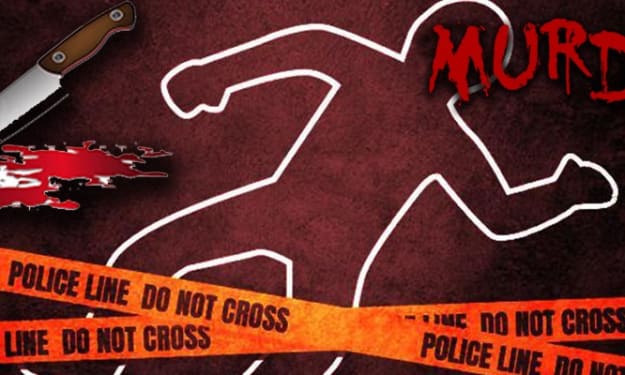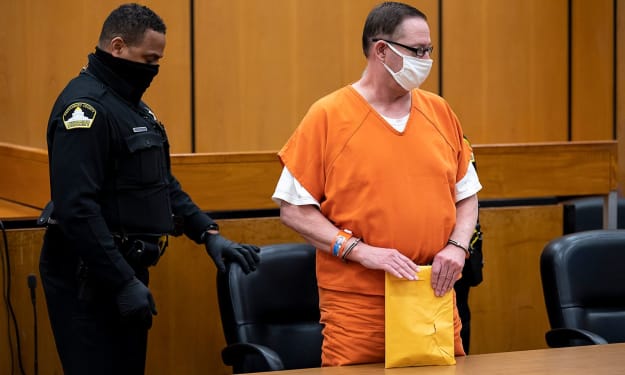Unsolved and Gruesome: The Enduring Mystery of The Black Dahlia Murder.
Exploring the Infamous 1947 Murder Case and Its Legacy in True Crime History.

I. Introduction
A. Background information about the Black Dahlia Murder
The Black Dahlia Murder is one of the most notorious unsolved crimes in American history. The murder of Elizabeth Short, a 22-year-old aspiring actress, took place in Los Angeles in January 1947. Her mutilated body was found on a vacant lot, and the case quickly gained widespread media attention due to its gruesome nature and the mystery surrounding Short's death. The case continues to fascinate and intrigue people to this day, and remains a subject of debate and speculation.
B. Overview of the case
On the morning of January 15, 1947, a woman walking with her young daughter discovered Elizabeth Short's body in a vacant lot in the Leimert Park neighborhood of Los Angeles. Short's body had been severed in half at the waist and drained of blood, and her face had been cut from ear to ear, creating a grotesque grin. The media dubbed her the "Black Dahlia," a nickname that would forever be associated with the murder.
The investigation into the murder of Elizabeth Short was one of the most extensive in Los Angeles history, but ultimately no one was ever convicted of the crime. The case has been the subject of numerous books, films, and other media, and has become a cultural touchstone in the true crime genre.
C. Importance of the case in popular culture
The Black Dahlia Murder has remained a subject of fascination in popular culture for over 70 years. The gruesome nature of the crime and the fact that it remains unsolved has fueled endless speculation and numerous theories about what happened to Elizabeth Short. The case has been the subject of numerous books, including James Ellroy's novel "The Black Dahlia," which was later adapted into a film by director Brian De Palma. The case has also been referenced in popular music, including songs by artists such as Patti Smith, AFI, and Tom Waits.
II. The Victim: Elizabeth Short
A. Early life and background
Elizabeth Short was born in Boston, Massachusetts in 1924. Her parents divorced when she was young, and she moved with her mother and siblings to Portland, Maine. Short's father, who had a history of violence, disappeared from her life, and she later learned that he had faked his own death in a car accident in California.
B. Move to California and events leading up to her murder
In 1943, Short moved to California, where she hoped to pursue a career in Hollywood. She stayed with various friends and acquaintances, and worked as a waitress and a clerk. Short had a reputation for being friendly and outgoing, but also for attracting the attention of men. In the months leading up to her death, Short was reportedly involved with several men, including a soldier who was later discharged due to mental illness.
C. Investigation into her death
The investigation into Elizabeth Short's murder was one of the largest in Los Angeles history. Police interviewed hundreds of people, including Short's friends and acquaintances, and searched for physical evidence that could lead them to her killer. Despite the extensive investigation, no one was ever charged with the crime.
III. The Crime Scene
A. Discovery of the body
The discovery of Elizabeth Short's body on January 15, 1947, was a shocking and gruesome event. Her body had been severed in half and drained of blood, and her face had been mutilated beyond recognition. The body was found in a vacant lot in the Leimert Park neighborhood of Los Angeles by a woman who was out walking with her young daughter.
B. Condition of the body
The condition of Elizabeth Short's body was a key factor in the investigation into her murder. The body had been carefully cleaned and posed, leading police to believe that the killer had some level of surgical skill or medical knowledge. The body was also carefully posed, with the arms above the head and the legs spread apart, suggesting that the killer was trying to convey a specific message.
C. Evidence found at the scene
Police found several pieces of evidence at the scene of Elizabeth Short's murder, including a heel print on the ground near the body, a black handbag, and a cement sack that had been used to transport the body to the vacant lot. However, none of the evidence led to a definitive identification of the killer.
IV. The Investigation
A. Initial suspects and leads
The investigation into the Black Dahlia Murder initially focused on several suspects, including a nightclub owner and a doctor who had been rumored to have been involved with Short. However, no definitive evidence was found linking any of these men to the crime.
B. Involvement of the media
The Black Dahlia Murder was one of the first high-profile cases to be covered extensively by the media. The coverage of the case was often sensationalized and graphic, and many newspapers published photos of Short's mutilated body. The media attention likely hindered the investigation and may have even led to false leads and confessions.
C. Police corruption and mishandling of the case
There have been numerous allegations of police corruption and mishandling of the case in the years since the murder. Some have claimed that the LAPD covered up evidence that might have led to the killer, while others have pointed to the mishandling of physical evidence and witness statements.
V. Suspects and Theories
A. Primary suspects
Several individuals have been named as potential suspects in the Black Dahlia Murder over the years. One of the most popular theories is that a man named Dr. George Hodel was the killer. Hodel was a physician who was investigated by the police at the time of the murder, and many believe that he had the surgical knowledge and social connections that could have enabled him to commit the crime. However, there is no definitive evidence linking Hodel to the murder.
B. Other theories and suspects
Other theories about the Black Dahlia Murder have implicated everyone from Hollywood insiders to mobsters to serial killers. Some have even suggested that the murder was part of a larger conspiracy involving the LAPD or other government agencies.
C. Lack of conviction and closure
Despite years of investigation and countless theories and suspects, the killer of Elizabeth Short has never been definitively identified or brought to justice. The lack of closure in the case has contributed to its enduring fascination and cultural significance.
VI. Cultural Significance
A. Books, films, and other cultural references to the case
The Black Dahlia Murder has been the subject of numerous books, films, and other cultural references. James Ellroy's novel "The Black Dahlia," which was later adapted into a film by director Brian De Palma, is perhaps the most well-known example. The case has also been referenced in popular music, including songs by artists such as Patti Smith, AFI, and Tom Waits.
B. The enduring mystery of the Black Dahlia Murder
The mystery surrounding the Black Dahlia Murder has only grown in the years since the crime was committed. Despite the countless theories and suspects that have emerged over the years, the killer's identity remains unknown, and the case continues to fascinate and intrigue people to this day.
C. Legacy of the case in law enforcement and investigation
The Black Dahlia Murder was a landmark case in American law enforcement and investigation. The case highlighted the importance of forensic evidence and the challenges of investigating a crime in the age of mass media. The investigation into the murder also helped to establish some of the standard practices of modern police work.
VII. Conclusion
A. Recap of the case
The Black Dahlia Murder remains one of the most infamous and notorious cases in American history. It is the unsolved murder of Elizabeth Short, whose mutilated and severed body was discovered in Los Angeles in January 1947. The case captivated the public and media attention, and the search for her killer continues to this day. Despite decades of investigation, the case remains unsolved, and Elizabeth Short's killer has never been identified or brought to justice.
B. Final thoughts on the Black Dahlia Murder
The Black Dahlia Murder case remains a fascinating and compelling true crime mystery. The gruesome nature of the crime and the enduring mystery surrounding it have captured the public's imagination and have been the subject of countless books, films, and television shows. The case continues to generate new theories and suspects, and it is unlikely that the mystery will ever be fully solved.
C. Significance of the case in true crime history
The Black Dahlia Murder case is significant in true crime history because it represents a major milestone in the development of forensic science and criminal investigation techniques. The investigation into the case was one of the largest and most complex in history at the time, and it was a turning point in the way that law enforcement officials approached the investigation of high-profile crimes. The case also had a significant impact on popular culture, influencing the development of crime fiction and inspiring countless authors and filmmakers.
In conclusion, the Black Dahlia Murder is a true crime case that continues to captivate and intrigue people all over the world. The mystery surrounding the case remains unsolved, and the identity of Elizabeth Short's killer is still unknown. The case is a testament to the enduring power of true crime stories, and it is likely to remain a subject of fascination for years to come. The case also serves as a reminder of the importance of forensic science and criminal investigation techniques in the pursuit of justice, and the need for a fair and thorough investigation in all cases.
About the Creator
Yuvaraj Murugasan
"Discover thought-provoking content on our page. From latest news and mystery,crime,thiriller,death to cutting-edge technology, we offer something for everyone. Join us for a journey of learning and inspiration. Stay tuned!"
Enjoyed the story? Support the Creator.
Subscribe for free to receive all their stories in your feed. You could also pledge your support or give them a one-off tip, letting them know you appreciate their work.






Comments
There are no comments for this story
Be the first to respond and start the conversation.